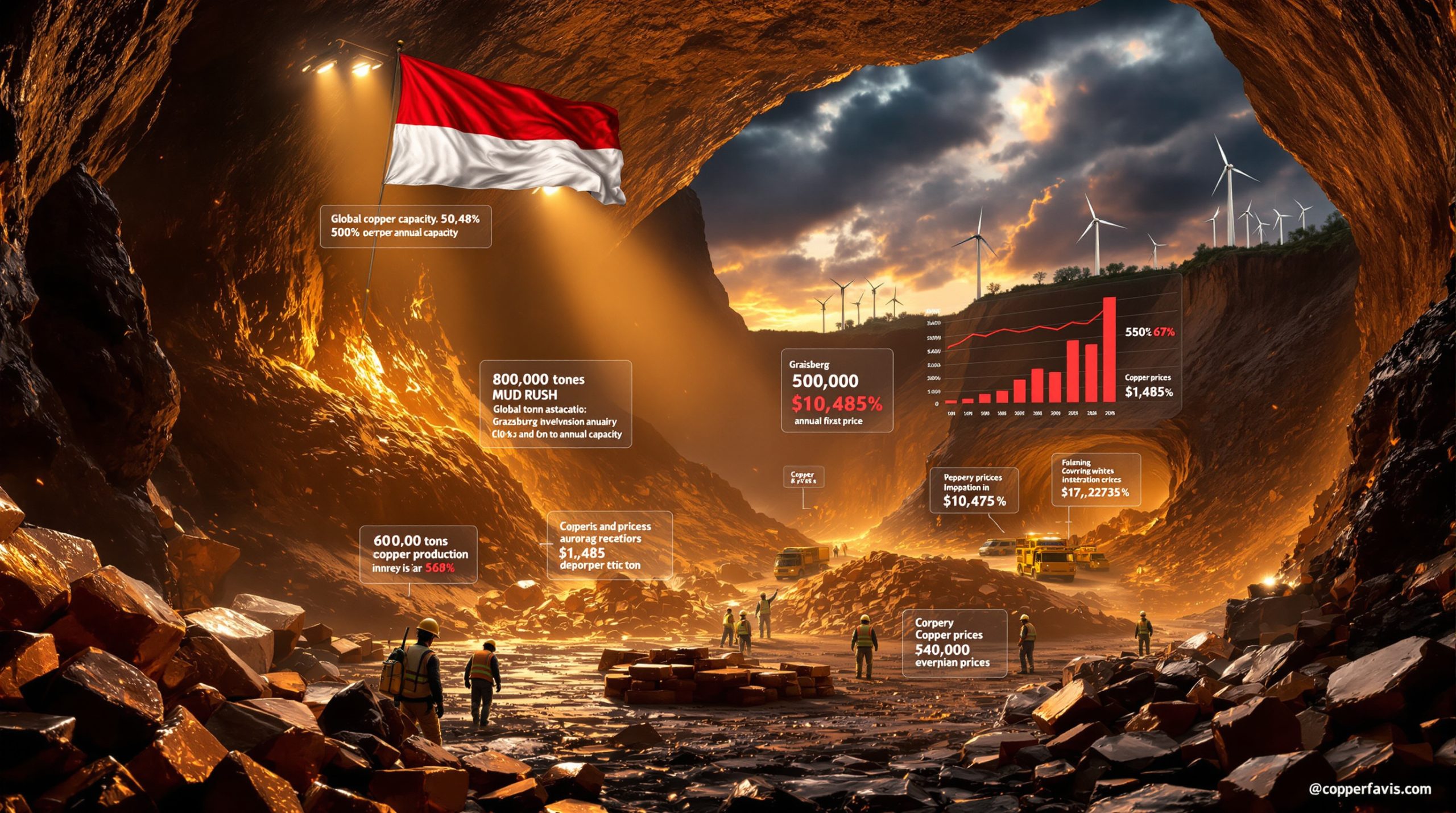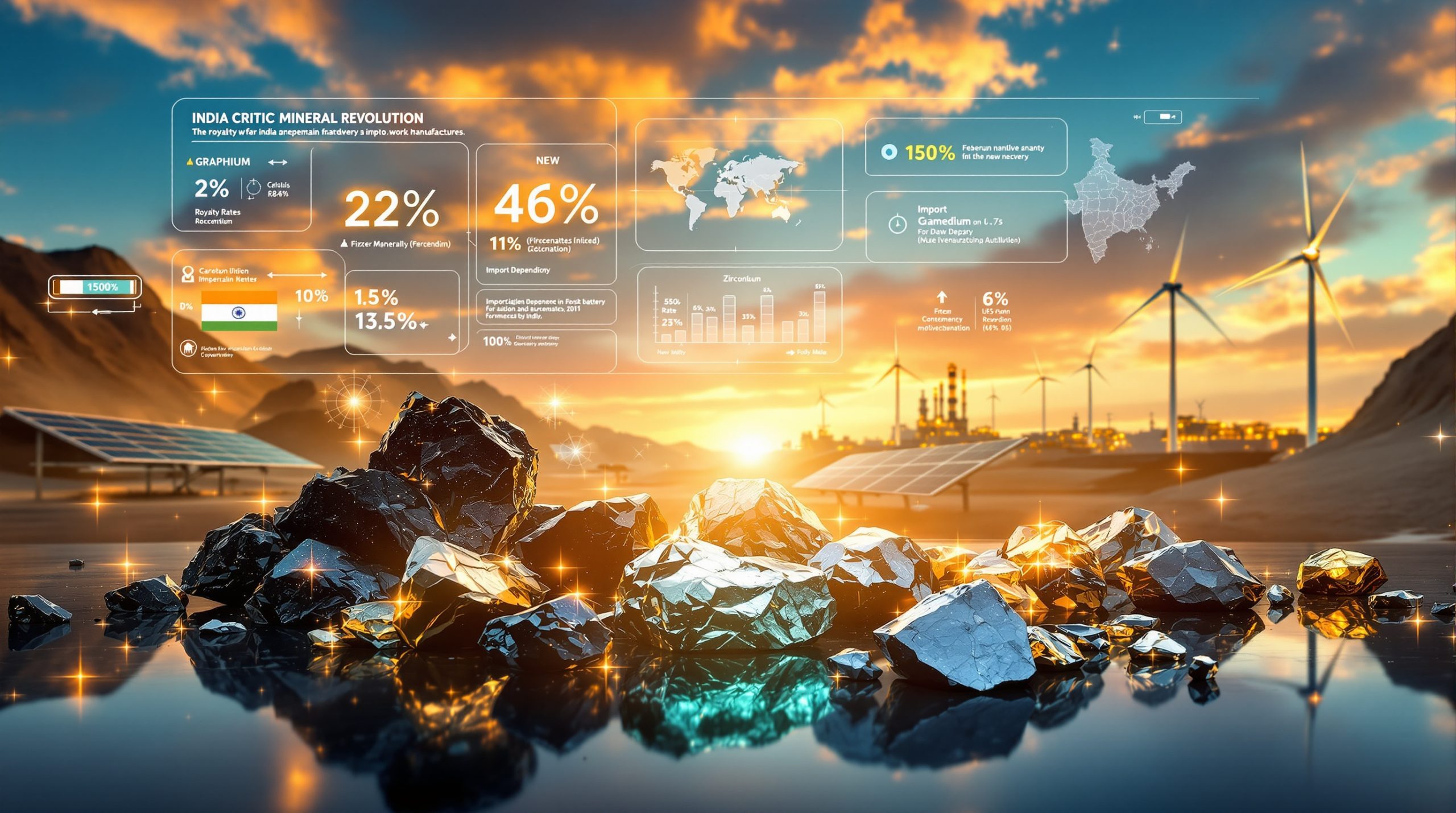The Technology-Nuclear Nexus: A New Energy Paradigm The convergence of artificial intelligence, data center proliferation, and climate commitments is creating unprecedented demand for nuclear power from an unexpected source: technology giants. This strategic pivot represents a fundamental transformation in how energy-intensive digital infrastructure is powered, with far-reaching implications for uranium market volatility, energy policy, and technology development. Why Are Tech Companies Suddenly Embracing Nuclear Energy? The AI Power Crisis Technology companies face an escalating energy challenge as artificial intelligence and data center operations consume exponentially growing amounts of electricity. Current estimates show data centers already account for approximately 1.5% of global electricity consumption, with projections indicating this could double by 2030 as AI capabilities expand. The computational demands of advanced AI systems require constant, reliable power that cannot experience even momentary interruptions. This reliability requirement creates fundamental challenges for renewable-only strategies that depend on intermittent generation sources. Carbon Neutrality Commitments Meet Practical Realities Major technology firms have established ambitious carbon neutrality targets that increasingly conflict with their growing energy requirements. Nuclear power offers a unique solution by providing: 24/7 baseload generation capacity Near-zero carbon emissions during operation Significantly higher energy density than alternatives Predictable long-term operational costs Minimal land-use footprint compared to solar/wind alternatives These attributes align perfectly with both the technical requirements of AI infrastructure and corporate sustainability commitments. Which Tech Companies Are Leading Nuclear Investment? Microsoft's Nuclear Strategy Microsoft has emerged as a nuclear energy pioneer among technology companies through several groundbreaking initiatives. The company is pursuing a 20-year agreement to restart Three Mile Island Unit 2, which has been dormant since the 1979 accident. This move signals Microsoft's serious commitment to securing reliable carbon-free power sources. Beyond the Three Mile Island deal, Microsoft has joined the World Nuclear Association as an industry member, positioning itself at the center of nuclear policy discussions. The company has also assembled specialized energy procurement teams focused specifically on nuclear solutions, demonstrating institutional commitment to this energy pathway. Microsoft's approach emphasizes both near-term solutions through existing infrastructure recommissioning and longer-term advanced reactor development, creating a multi-faceted nuclear procurement strategy. Amazon's Nuclear Ambitions Amazon has positioned itself as a major nuclear investor with a $500 million investment in X-energy to develop up to 5 GW of advanced nuclear capacity. This substantial financial commitment demonstrates the scale of Amazon's energy needs and its willingness to fund next-generation technologies. The company has established strategic partnerships with multiple reactor technology developers while integrating nuclear procurement into its data center expansion planning. Amazon is also exploring co-located nuclear facilities with data centers, creating integrated energy hubs that minimize transmission requirements. These initiatives reflect Amazon's recognition that its growing computational requirements demand scalable, reliable power sources that can expand alongside its operations. Google's Multi-Faceted Nuclear Approach Google has pursued a diversified nuclear strategy including a partnership with Kairos Power for 500 MW of advanced reactor capacity. The company has also signed an agreement with Elementl Power for next-generation nuclear development, spreading its investments across multiple technological approaches. Google is integrating nuclear procurement into its carbon-free energy portfolio while conducting research initiatives exploring nuclear-powered data centers. This multi-pronged approach provides technological diversity and staged deployment timelines, minimizing risk while securing future energy supplies. Meta's Nuclear Energy Procurement Meta has taken significant steps toward nuclear adoption by issuing requests for proposals covering 4 GW of nuclear capacity. The company is exploring small modular reactor (SMR) deployment options that can be scaled incrementally alongside data center growth. Meta has integrated nuclear into its sustainability strategy while evaluating co-location opportunities for data centers and power generation. The company's focus remains on securing reliable, scalable power sources that align with its climate commitments while meeting the growing energy demands of its platforms. How Are Tech Companies Reshaping Nuclear Markets? Unprecedented Capital Deployment Technology companies bring financial resources that traditional utility customers typically lack, with multi-billion dollar investment capabilities unrestricted by regulatory constraints. This financial firepower allows tech giants to fund long-term development cycles that might otherwise struggle to secure financing. Tech companies have demonstrated the capacity to absorb technology development risks that utilities or traditional investors might avoid. Their flexibility in procurement structures and financing models also creates innovative pathways for nuclear project development. As Colin Healey, CEO of Premier American Uranium, noted: "Big tech is just so important and it's so good to see them starting to get involved at the industry level. These tech companies absolutely want to deliver their products in the most green emission-free way and they see nuclear as a solution for safe green power at a large scale with incredible uptime." This capital availability is transforming nuclear economics by providing development funding that utilities alone could not support, accelerating innovation across the entire nuclear supply chain. Accelerated Innovation Timelines The technology sector's involvement is compressing nuclear development cycles through an emphasis on rapid deployment of small modular reactors (SMRs). Tech companies are supporting parallel development of multiple reactor technologies, reducing overall technological risk while accelerating viable solutions. Digital twins and advanced simulation capabilities are being applied to nuclear development, reducing physical testing requirements and accelerating design optimization. Project management methodologies from the technology sector are being imported into nuclear development, compressing timelines that traditionally span decades. These accelerated development approaches contrast sharply with traditional nuclear timelines, potentially bringing new capacity online years faster than conventional approaches. Novel Deployment Models Technology companies are pioneering new nuclear deployment strategies including co-located data center and nuclear facilities in "Hypergrid" models. These integrated energy parks combine nuclear with renewables and storage, creating self-contained energy ecosystems optimized for computational workloads. Private power purchase agreements are bypassing traditional utility structures, creating direct relationships between generators and consumers. Modular capacity expansion aligned with computational growth allows incremental deployment that matches energy supply with increasing demand. The Fermi America "Hypergrid" clean energy park in Texas exemplifies this approach, integrating nuclear with solar and battery storage to support on-site AI clusters. This model creates energy security zones with dedicated power resources specifically designed for data center operations. What Technical Solutions Are Being Pursued? Small Modular Reactors (SMRs) SMRs have emerged as the preferred technology solution for several reasons. Their scalable deployment matches data center growth patterns, allowing capacity to be added incrementally rather than in large, difficult-to-finance chunks. Enhanced safety features through passive cooling systems reduce operational risks while factory fabrication reduces construction uncertainties and timelines. Lower individual unit capital requirements improve financing flexibility, while flexible siting options allow facilities to be located closer to demand centers. These characteristics align perfectly with technology companies' needs for reliable, scalable power that can be deployed incrementally alongside data center expansion. Advanced Reactor Designs Beyond traditional light-water reactors, technology companies are investing in high-temperature gas-cooled reactors (HTGRs) that offer improved efficiency and safety characteristics. Molten salt reactor technologies with inherent safety features and efficient fuel utilization are also receiving significant investment. Microreactors for distributed deployment provide options for smaller facilities or edge computing locations, while fast neutron reactor designs offer improved fuel utilization and waste management capabilities. These advanced technologies offer potential improvements in efficiency, safety, and nuclear waste disposal compared to conventional nuclear plants, addressing historical concerns while improving economic performance. Hybrid Energy Systems Rather than pursuing nuclear-only solutions, technology companies are developing integrated approaches that combine nuclear with other generation sources. These hybrid systems include combined nuclear-renewable-storage configurations that leverage each technology's strengths. Digital control systems optimize across multiple generation sources, balancing intermittent renewables with baseload nuclear capacity. Microgrids with nuclear baseload capabilities provide resilience against grid disruptions, while waste heat utilization creates additional efficiency gains for improved economic performance. These hybrid systems leverage nuclear's baseload capabilities while incorporating renewable generation and storage technologies, creating resilient power systems optimized for computational workloads. What Challenges Remain for Tech-Driven Nuclear Expansion? Regulatory Frameworks Despite recent regulatory advances, significant challenges persist in licensing processes designed for traditional utility models. Limited regulatory experience with new reactor technologies creates uncertainty in approval timelines and requirements. Jurisdictional complexities across multiple regulatory authorities complicate deployment planning, while international harmonization challenges affect global technology companies operating across multiple markets. Regulatory modernization efforts are underway but remain a potential bottleneck for rapid deployment, requiring continued engagement from technology companies to accelerate approval processes. Supply Chain Constraints The nuclear supply chain faces significant limitations after decades of limited construction activity. Manufacturing capabilities have atrophied, requiring significant reinvestment to support expanded deployment. A shortage of qualified nuclear engineers and technicians limits human resource availability, while limited uranium production capacity following years of underinvestment constrains fuel availability. Furthermore, the uranium mining halt announced by some major producers could exacerbate these supply challenges. The concentration of key components in specific geographic regions creates supply vulnerabilities that must be addressed. Philip Williams, CEO of IsoEnergy, highlighted this fundamental challenge: "You can have all the conversion capacity in the world, all the enrichment capacity in the world, all the nuclear plants being coming online or being planned to be built, but if you don't have the fuel at the beginning, then it's all irrelevant." These constraints could limit the pace of nuclear expansion regardless of available capital, requiring strategic investments throughout the supply chain. Public Perception Challenges Despite growing acceptance, nuclear energy still faces perception issues stemming from historical concerns about safety and waste management. Limited public understanding of modern nuclear technologies creates resistance based on outdated information. Organized opposition from certain environmental groups can delay project approvals, while misconceptions about radiation risks and environmental impacts persist in public discourse. Technology companies are actively working to address these perception challenges through education and engagement initiatives, recognizing that public acceptance is critical for successful deployment. What Are the Uranium Market Implications? Supply-Demand Fundamentals The technology sector's nuclear ambitions are transforming uranium markets, with Goldman Sachs estimating that meeting future data center nuclear power needs could require 85-90 GW of new global nuclear capacity. This substantial demand growth comes at a time when current uranium production remains below consumption levels. Development timelines for new uranium mines typically span 10-15 years, creating significant lag between market signals and production response. Existing inventories are insufficient to bridge the growing supply gap, creating structural market tightness. Brandon Munro, Executive Chairman of Bannerman Energy, describes the situation bluntly: "The reason why I'm being very blunt about this supply-demand deficit is that it is an absolute undeniable conclusion that's coming out of this conference. We anticipate that these conditions will provoke a contracting cycle… certain utilities will realize the best way they can mitigate shortage scenarios into the 2030s is to start restocking." These fundamentals suggest sustained upward pressure on uranium prices as technology demand accelerates, creating value for existing producers with operational assets. Production Challenges Uranium producers face multiple constraints, including limited capital investment following post-Fukushima price declines. Technical difficulties at several major production centers have reduced output reliability, while geopolitical complications affect access to resources in certain jurisdictions. Permitting challenges in many jurisdictions extend development timelines, further delaying supply response. Since 2018, over 50% of world uranium has been mined using in-situ leach methods, but in 2024, conventional mining increased to more than 40% of global supply, reflecting evolving production economics and technical considerations. These challenges limit the supply response capability even as prices rise, prolonging market tightness and supporting higher uranium prices. Strategic Advantages for Stable Jurisdictions Suppliers in politically stable regions gain competitive advantages as technology companies prioritize supply chain security and predictability. Western sanctions against Russian nuclear fuel create opportunities for alternative suppliers in allied nations. Government support for domestic US uranium production is increasing as energy security concerns rise. Non-aligned producers gain flexibility to serve all markets globally, creating strategic optionality unavailable to producers in sanctioned jurisdictions. Energy Fuels' recent results demonstrate the value of secure production, with CEO Mark Chalmers noting: "The exceptional production at this mine is a 'once in a lifetime event' and has come at the perfect time as it places us in the enviable position of increasing production while lowering costs." These dynamics create strategic premiums for producers in stable, allied jurisdictions with strong environmental and social governance practices, influencing investment decisions and contract structures. How Will This Transform Energy Infrastructure? Decentralized Generation Models The technology-nuclear nexus is driving fundamental changes in electricity infrastructure through movement away from centralized utility models toward private generation. Integration of generation assets with computational infrastructure creates self-contained energy ecosystems. Specialized transmission corridors linking nuclear facilities with data centers are being developed to minimize transmission losses and infrastructure requirements. Energy security zones with dedicated power resources protect critical computational infrastructure from grid disruptions. These changes represent a significant departure from traditional electricity market structures, creating new models for power generation and consumption. Grid Modernization Requirements Supporting these new models requires substantial grid enhancements, including advanced digital control systems managing complex power flows. Upgraded transmission capacity connecting generation with data centers reduces congestion and improves reliability. Enhanced cybersecurity protections for critical infrastructure are essential given the strategic importance of these facilities. Integrated demand response capabilities balance computational loads with available generation, optimizing system performance. These modernization needs create additional investment requirements beyond generation assets, requiring coordination between technology companies, utilities, and grid operators. Policy Framework Evolution Existing energy policies require significant adaptation, including rethinking capacity market structures to value reliability appropriately. New models for private generation and consumption must be developed to accommodate technology company requirements. Appropriate incentives for baseload carbon-free generation are needed to align market signals with policy objectives. Regulatory frameworks for co-located generation and consumption require development to facilitate integrated energy parks. These policy changes face political challenges but are increasingly recognized as necessary for energy security and climate objectives, creating momentum for regulatory innovation. What Does This Mean for the Future? Transformative Market Dynamics The technology sector's nuclear embrace creates transformative market dynamics through unprecedented institutional demand from non-traditional customers. Substantial capital resources that traditional utility customers typically lack are being directed toward nuclear development. Accelerated development timelines driven by technological urgency compress traditional nuclear deployment schedules. Integration of digital technologies throughout the nuclear value chain improves efficiency and reduces costs. These dynamics suggest a fundamental restructuring of nuclear markets rather than a cyclical upturn, creating sustained opportunities for well-positioned companies. Strategic Implications for Energy Security The convergence of technology and nuclear interests has profound security implications by reducing dependence on fossil fuel imports for critical digital infrastructure. Enhanced resilience against energy supply disruptions protects computational capabilities during crises. Strategic advantages accrue to countries with established nuclear capabilities and supply chains. New geopolitical considerations around nuclear fuel cycle access influence international relations and trade policies. These security dimensions increasingly influence national energy policies worldwide, creating supportive regulatory environments for nuclear expansion. Investment Considerations For investors considering uranium exposure, operational excellence has emerged as the primary value differentiator between successful producers and development-stage projects. Companies demonstrating consistent production capabilities command significant premiums over those facing technical uncertainties. Geographic positioning in stable jurisdictions with government support provides competitive advantages in an increasingly bifurcated market. Recent US uranium market disruption due to tariff threats has highlighted the importance of secure supply chains. Strategic relationships with technology sector customers may become increasingly valuable as contracting competition intensifies. Several uranium companies illustrate these investment considerations: Energy Fuels maintains a robust balance sheet with over $250 million of liquidity including $71.49 million of cash and cash equivalents, $126.41 million of marketable securities, and no debt. The company holds substantial uranium inventory of 1,875,000 pounds of U3O8, positioning it to capitalize on anticipated higher uranium prices. enCore Energy successfully secured $115 million through convertible notes at a 5.5% coupon rate, demonstrating institutional capital interest in well-positioned uranium companies. IsoEnergy maintains $85 million in cash and strategic backing from NextGen Energy, which owns 31% of the company, providing financial flexibility for development initiatives. These financial positions demonstrate the sector's improved access to capital markets, creating opportunities for strategic growth initiatives. A Multi-Decade Transformation The technology sector's big tech nuclear energy demand represents more than a temporary trend—it signals a fundamental transformation in how energy-intensive digital infrastructure is powered. As artificial intelligence capabilities expand and computational requirements grow exponentially, the need for reliable, scalable, carbon-free baseload power becomes increasingly critical. This convergence creates a compelling multi-decade investment opportunity in the uranium sector, where structural supply constraints meet accelerating demand from resource-rich technology companies. Unlike previous nuclear investment cycles driven primarily by utility procurement, the current transformation brings unprecedented institutional demand, substantial capital resources, and technological innovation that could fundamentally reshape global energy systems. The resulting market dynamics suggest sustained support for uranium prices and producer valuations, particularly for companies demonstrating operational excellence in stable jurisdictions. As this transformation unfolds, it will likely create significant opportunities throughout the nuclear fuel cycle while contributing to both climate objectives and energy security priorities. Ready to Capitalise on the Next Major Mineral Discovery? Discover how savvy investors are positioning themselves ahead of transformative ASX mining announcements with Discovery Alert's proprietary Discovery IQ model, delivering real-time alerts and actionable insights directly to your inbox. Explore our dedicated discoveries page to understand why major mineral finds can generate substantial returns, and begin your 30-day free trial today.

KGHM Sierra Gorda Profit Rises 80% on Operational Excellence
KGHM Sierra Gorda profit rise drives 80% surge in Q3



